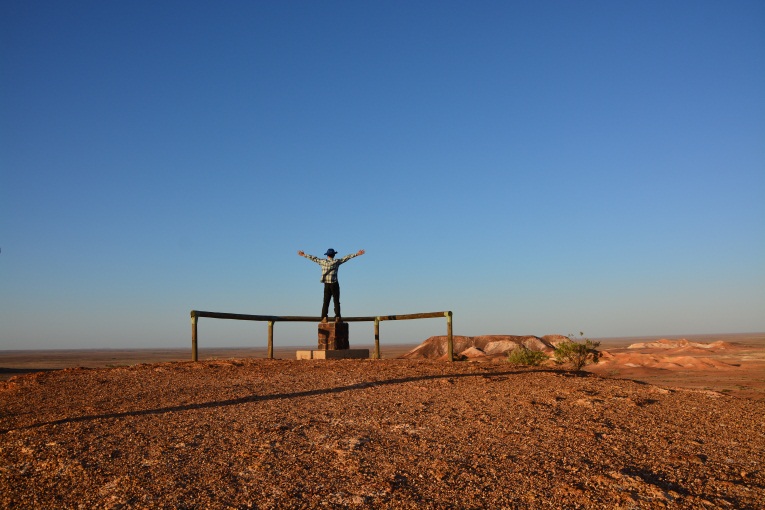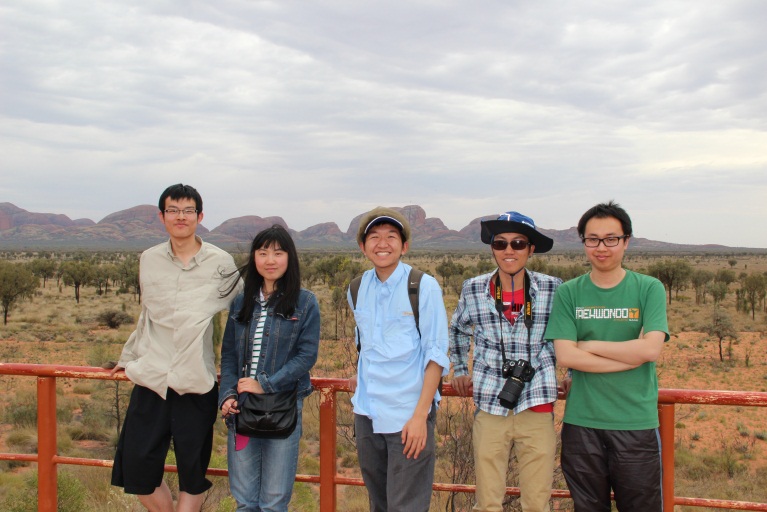01 December 2013

Travelling to the desert heart of Australia is a daunting experience for anyone. Yet a group of five exchange students from China decided to make the most of their mid-term break and embark on a bold adventure into Australia’s red centre.
 Despite never having driven in Australia Weichang Yuan, visiting from Tianjin University, had the daring idea to drive to Alice Springs via Uluru. He discussed the idea with his friends and was thrilled when fellow students, Yusong Shen, Zekun Zhang, Chi Zhang and Youjuan Zhang, agreed to join the expedition.
Despite never having driven in Australia Weichang Yuan, visiting from Tianjin University, had the daring idea to drive to Alice Springs via Uluru. He discussed the idea with his friends and was thrilled when fellow students, Yusong Shen, Zekun Zhang, Chi Zhang and Youjuan Zhang, agreed to join the expedition.
‘It was a bold decision to make, because I had never driven in Australia. I was thankful for their trust in me.’
The dangers of the Australian outback are well documented. Anyone venturing into the wilderness is warned to take every precaution in planning their trip. Weichang worked with his fellow students to ensure they were well equipped for the arduous journey.
‘We spent two weeks planning, including the routes, car rental, fees, first aid, accommodation, water, food and emergency plan. Time was limited, but we made a relatively sound plan.’
The students travelled an epic 4,000 km - from Adelaide to various outback destinations including Coober Pedy, Uluru, Kings Canyon and Alice Springs. The enormity of the Australian landscape left a deep impression on them.
‘The wildness and vastness of central Australia deeply impressed me, and it was the first time in my life feeling that I was so small in front of great nature,’ Weichang recalls.
 Their odyssey also provided an opportunity to gain an insight into Aboriginal culture.
Their odyssey also provided an opportunity to gain an insight into Aboriginal culture.
‘I learned about the survival skills that the aboriginal people adopt, and I was so surprised to find out that such an extraordinary culture was created in this deserted land,’ says Weichang.
Visiting from China on a 6 month exchange, the five students hail from some of the leading universities in China and are studying a range of courses at the University including nursing, engineering and finance.
Their home universities, Beijing Jiaotong University, Beijing Normal University, Tianjin University and Shandong University, are key partners of the University of South Australia.
The University recently established the China-Australia Centre for Health Sciences with Shandong University. The Centre will combine the strengths of the two universities to address shared health challenges in Australia and China.
Meanwhile in northern China, the University has collaborated with Tianjin University to develop the China-Australia Centre for Sustainable Urban Development. This new Centre aims to promote joint international research into urban issues across the Asia-Pacific region.
Australian students have also benefitted from collaborations with Chinese universities. Earlier this year eight Engineering students travelled to Beijing and studied with Chinese Mechanical Engineering students from Beijing Jiaotong University.
Participating students rated their interaction with Chinese students as the most memorable aspect. This included dinners, basketball games, taking in local sights and of course studying together. The students received financial support to join the tour from both the University of South Australia and the Australian Government.
The experiences enjoyed by both Australian and Chinese exchange students are valuable reminders of the benefits of international university collaborations.
No doubt when Weichang and his classmates return to China they will not only reap the benefits of their international educational experience but they will have plenty of photos and stories to share of their Australian adventure.


